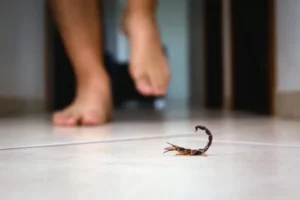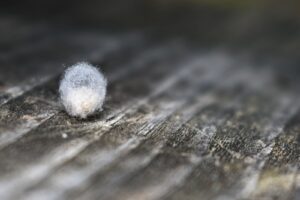Home / Blog / Spiders / An Inside Look at Different Jumping Spider Species
An Inside Look at Different Jumping Spider Species

Scientifically reviewed by Rachel Maldonado
-Published on April 5, 2024
-Updated on August 30, 2024
An Inside Look at Different Jumping Spider Species
Jumping spiders are a marvel of nature – tiny, yet so versatile; small, yet so fascinating. With over 6,000 described species, they are the largest family of spiders, making up a staggering 13% of all spider species known to man.
This diverse group of arachnids captivates not only arachnologists but also art enthusiasts, photographers, and even the casual observer, with their unique behaviors and striking appearances.
But what exactly are jumping spiders, and how many different jumping spider species are there? We’ll take a closer look.
How Many Species of Jumping Spiders Are There?

With over 6,000 described species and potentially many more yet to be classified, they are found in a broad spectrum of habitats on every continent except Antarctica.
These spiders are known for their keen vision, with some species able to see polarized light, and for their incredible ability to jump, which can allow them to leap several times their own body length.
About 90% of all jumping spiders belong to the subfamily Salticinae. Males sport a distinctive median apophysis in their palpal bulbs, and the lack of a tarsal claw on the female’s pedipalp is a common characteristic.
The family shares a complex tracheal system, which may contribute to the jerky and precise movements for which they are recognized.
10 Most Common Jumping Spider Species
Here’s a brief overview of some of the most commonly encountered jumping spider species:
1. Bold Jumper (Phidippus audax)
The most famous jumping spider, the bold jumper, is perhaps the most commercially recognizable.
With its characteristic black and white coloration and iridescent chelicerae, this species is a common sight in gardens and on the side of houses. It is known for its bold hunting behavior and its ability to pounce on prey with tremendous precision in the blink of an eye.
2. Zebra Jumper (Salticus scenicus)
Named for its striped appearance, the zebra jumper is a small but identifiable species often found in grassy areas, patrolling actively for prey among grass blades and low foliage. Its jumping ability makes it a skillful hunter, even capturing prey in mid-air.
3. Gray Wall Jumper (Menemerus bivitatttus aurantius)
True to its name, the gray wall jumper is a master of camouflage and frequently found on vertical surfaces, including walls and the sides of buildings. This adaptation allows it to ambush prey that comes into its proximity while remaining nearly invisible.
4. Peacock Spider (Maratus volans)
A favorite among spider lovers, the peacock spider’s vibrant colors and courtship displays have made it a social media sensation. It is a small species, with males typically flaunting a fan-like abdomen adorned with bright, metallic colors that they use to attract females.
5. Phidippus Regius
This species is closely related to the bold jumper but is known for its slightly larger size and less conspicuous appearance. It still exhibits the same agile hunting behavior as its more famous cousin.
6. Tan Jumping Spider (Platycryptus undatus)
The tan jumping spider is known for its unique body shape, which is notably flatter than that of most jumping spiders. This adaptation aids in its preferred hunting method, which involves stalking and leaping onto prey from a concealed position.
7. Red Jumping Spider (Plexippus Paykulli)
This spider is characterized by its reddish-orange coloration and is commonly found in the southern United States. It often inhabits shrubs and other vegetation, using its jumping prowess to traverse its environment and apprehend prey.
8. Marpissa pikei
Not technically a single species but a full genus, this type of jumping spider is recognizable by its short body and large set of eyes. Marpissa spiders often construct silken tents from which they stalk passing prey, demonstrating a level of hunting strategy not common among most jumping spiders.
9. Peckhamia sp.
These genera of ant-mimicking jumping spiders are true masters of disguise. They have evolved to closely resemble ants, displaying characteristics that serve to deter predators or deceive both prey and other ants.
10. Sarinda hentzi
Similar to Peckhamia, Sarinda hentzi is an ant-mimicking jumping spider that has evolved to look like its ant prey. Its behavior and morphology are fine-tuned to act as an infiltrator within ant colonies, obtaining protection and, potentially, easier access to predated insects.
Are Jumping Spiders Aggressive?
Despite their fearsome hunting abilities, most jumping spiders are not aggressive toward humans. Their tiny size and need to conserve energy make them unlikely to attack a creature much larger than themselves. Instead, they may exhibit mild curiosity, often tilting their heads to get a better look at you.
When threatened, some jumping spiders will rise up on their hind legs, displaying their chelicerae and forelegs.
This ‘threat’ display is a bluff, meant to intimidate and ward off potential predators. If the threat persists or is perceived as insurmountable, they may resort to jumping away or to the safety of a hiding spot.
What Spiders Are Mistaken for Jumping Spiders?
Despite their unique characteristics, jumping spiders are often mistaken for other types of arachnids, especially when they are very young. Some common mistaken identities include:
Wolf Spiders
Were it not for their different eye arrangement and significant size difference, wolf spiders are often confused for jumping spiders when encountered at a distance or seen at a young age. Both are proficient hunters but have different strategies and behaviors.
Sac Spiders
Sac spiders may occasionally be misidentified as jumping spiders. Both families are good jumpers and are found in similar environments, but sac spiders are identifiable by their longer, thinner body shape and enlarged anterior median eyes.
Nursery Web Spiders
These spiders often bear a passing resemblance to jumping spiders. Their generally greater size and different eye arrangement are the usual giveaways.
The Takeaway
Jumping spiders are a crucial part of the ecosystem, contributing to pest control in gardens and the natural environment. Their voracious hunting behavior keeps insect populations in check, and they are also an essential food source for a wide variety of predators, from birds to other spiders.
For those who want to control pests in their home, understanding the role that spiders play can be valuable. Instead of squashing them when found indoors, spiders can be carefully relocated outside, where they can continue their valuable work in the garden.
For more information on pest control and how to manage pests without harming the environment, consider reaching out to Hawx Pest Control. With a sustainable and eco-friendly approach, we offer solutions that are good for your home – and the environment.
Join our family of satisfied customers today to learn more!
Related Articles
Visit our blog to learn more.
→







